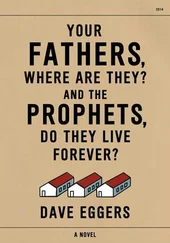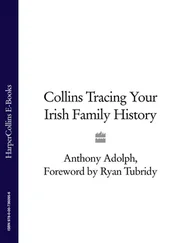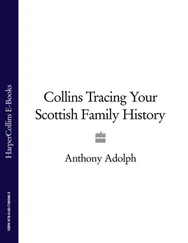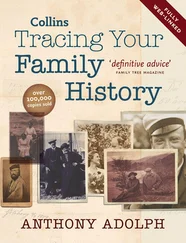• Number of house, indenture or schedule: This is not to be confused with the house number, but is the number of the property being assessed in the enumeration district.
• House inhabited or uninhabited / building: This question was omitted in 1851 but included afterwards.
• Name of street, place, or road, and name or number of house: As stated, the number or house name is provided along with the street. Unlike the 1841 census, house numbers and names were meant to be provided.
 From 1861: Road, street etc., and no. or name of house: More complete details of the address of the property were included from 1861, though many houses simply didn’t have a number or name; details are likely to be more complete for urban areas.
From 1861: Road, street etc., and no. or name of house: More complete details of the address of the property were included from 1861, though many houses simply didn’t have a number or name; details are likely to be more complete for urban areas.
• Name and surname of each person who abode in the house on the night: By 1851, it was more usual for the middle name to be included or, at least, the middle initial, making it easier to identify the correct individual. As mentioned previously, every person who had spent the night in the dwelling place was recorded, regardless of whether it was their usual place of residence.
• Relationship to head of household: This is an additional column compared to the 1841 census, which is very useful for genealogical research. It detailed how each person in the household was related to the head of the household and so helps place people accurately on the family tree. It is not uncommon to find a niece or aunt or grandfather living in the household, thereby giving extra clues about your ancestors. It is also possible to identify how many servants were in the household as they were also noted separately, which gives an indication of social status.
• Marital condition: This column denotes whether the individual was single, married or widowed. Sometimes unmarried people were simply listed as U, with married people denoted M or Mar.
• Age: The ages were no longer rounded down and therefore should be more accurate. Bear in mind, however, that some individuals would not remember their ages with complete accuracy and so there can be errors, with a margin of a year or two either way.

 From 1881 to 1901: Age at last birthday: This was intended to make the age data more accurate.
From 1881 to 1901: Age at last birthday: This was intended to make the age data more accurate.
• Sex : Denotes the gender of the individual, usually given as M or F.
• Rank, profession or occupation: What the occupation of the individual was. Children at school would be noted down as ‘scholars’.
From 1891 to 1901: Employer, employed or neither: This was intended to establish statistical information on the nature of Britain’s working population. You will often see the number of employees that worked for an employer noted here.

 From 1901: Whether the individual was working at home: New information to ascertain how many people still worked at home, and the numbers who regularly went to a place of work.
From 1901: Whether the individual was working at home: New information to ascertain how many people still worked at home, and the numbers who regularly went to a place of work.
• Where born: People were required to note down exactly where they were born, usually stating the parish of birth. This information enables current researchers to find the birth or baptism details of those born prior to the onset of civil registration in 1837 and, therefore, to trace back the family tree further still.
• Whether blind or deaf and dumb: Such physical disabilities were to be noted.

 From 1871 to 1901: Imbecile, idiot or lunatic: Additional disabilities were to be included.
From 1871 to 1901: Imbecile, idiot or lunatic: Additional disabilities were to be included.
• From 1891: Language: Anyone in Wales or Monmouthshire was required to state whether they spoke English only, Welsh only, or English and Welsh (listed as ‘both’).

 From 1901: Language: The language spoken section was extended to the Isle of Man census.
From 1901: Language: The language spoken section was extended to the Isle of Man census.
As well as information on people living in households across the country, people in various residential institutions – schools, prisons, workhouses, hospitals and asylums – were also noted, though to preserve the anonymity of some of these categories, initials only were used instead of full names, making it tricky to identify a relative who you feel might be away from home. Data on the crews of ships docked in British ports are also included in the returns, as are soldiers in barracks and sailors in naval bases, establishments and ships in port.
Archive References for the 1851–1901 Censuses
1.1851 census
The same prefix code as the 1841 census is used, HO 107 (a National Archives reference). Registration districts were now used and were further divided into smaller sub-districts. The returns were organized by registration district. Each sub-district was given a piece number to follow on from HO 107. The first piece numbers were for the London area and then they were organized on a rough south-to-north basis. After all of England had been allocated piece numbers, subsequent ones were allocated for Wales and then the Isle of Man and, lastly, the Channel Islands. Each county, depending on its size, could include numerous piece numbers.
There was also a folio and page numbering system similar to the one mentioned for 1841. Once a new enumeration district started within a sub-district the page numbers would start from number 1 again. The reference slip is now on the bottom of a page and an example of a reference would be HO 107/2036. HO 107 is the standard reference and 2036 would be the piece number for the registration district of Stourbridge in Worcestershire. To find the exact page you need the folio and page number, although this is not be found on the reference slip itself, but on the top of the census return page. The folio page was stamped on every other page and the page number was printed on every page.
From 1861 onwards the TNA prefix is different. Instead of ‘HO 107’, each census return is prefixed with ‘RG’ (Registrar General) and, depending on the year of the census, an appropriate number. Hence, for 1861, each census return has the initial prefix RG 9, the number 9 signifying the year 1861.
Other than that, the numbering system is similar to that of 1851. Each registration district was given a unique piece number and these numbers were organized on a similar geographical basis as those of 1851 (with the returns for London coming first). The reference slip is found at the side of the page; a typical one would be RG 9/602 where RG 9 would signify the 1861 census and 602 would represent registration district 85 for Brighton. Again for a complete reference you would need the appropriate folio and page number (described above).
Читать дальше
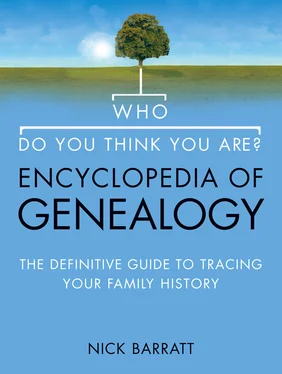
 From 1861: Road, street etc., and no. or name of house: More complete details of the address of the property were included from 1861, though many houses simply didn’t have a number or name; details are likely to be more complete for urban areas.
From 1861: Road, street etc., and no. or name of house: More complete details of the address of the property were included from 1861, though many houses simply didn’t have a number or name; details are likely to be more complete for urban areas.